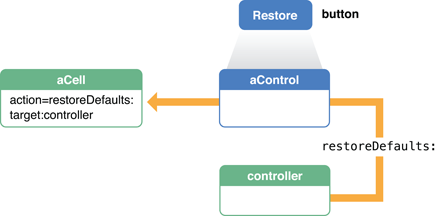SimplePolygon (using UIBezierPath & UIView)
SimpleDrawing
SimpleDrawing (using UIBezierPath)
https://www.weheartswift.com/bezier-paths-gesture-recognizers/
Lecture5
lecture5
Term Project Presentation (11/2)
Term Project Presentation (11/2)
http://quantifiedself.com/ 를 살펴보고 Term Project의 측정해야할 내용을 분석해오고 발표할 것.
HW3
Individual Assignment (Midterm Presentation on 10/19)
문백산 – Melanie Swan, Sensor Mania! The Internet of Things, Wearable Computing, Objective Metrics, and the Quantified Self 2.0 http://www.mdpi.com/2224-2708/1/3/217/htm
박재한 – J Clawson, JA Pater, AD Miller, ED Mynatt, Lena Mamykina, No Longer Wearing: Investigating the Abandonment of
Personal Health-Tracking Technologies on Craigslist, UBICOMP’15 http://www.andrewmiller.net/pdf/2015_Clawson.pdf
홍석이 – Teng Han, Xiang Xiao, Lanfei Shi, John Canny, Jingtao Wang, Balancing Accuracy and Fun: Designing Camera Based Mobile Games for Implicit Heart Rate Monitoring, CHI’15 http://people.cs.pitt.edu/~jingtaow/research/livepulsegames-chi2015.pdf
문경원 – John Rooksby, Mattias Rost, Alistair Morrison, Matthew Chalmers, Personal Tracking as Lived Informatics, CHI’14 http://homes.cs.washington.edu/~depstein/hcde596/papers/rooksby_chi14.pdf
송지혜 – EK Choe, B Lee, M Kay, W Pratt, JA Kientz, SleepTight: Low-burden, Self-monitoring Technology for
Capturing and Reflecting on Sleep Behaviors, UBICOMP’15 https://faculty.ist.psu.edu/choe/download/UBICOMP-2015-Choe-SleepTight.pdf
김민정 – Matthew Mauriello, Michael Gubbels, Jon E. Froehlich, Social fabric fitness: the design and evaluation of wearable E-textile displays to support group running, CHI’14 http://www-lb.cs.umd.edu/~jonf/publications/Mauriello_SocialFabricFitness-DesignAndEvalOfWearableETextileDisplays_CHI2014.pdf
최한아 – Eun Kyoung Choe, Nicole B. Lee, Bongshin Lee, Wanda Pratt, Julie A. Kientz, Understanding Quantified-Selfers’ Practices in
Collecting and Exploring Personal Data, CHI’14 http://research.microsoft.com/EN-US/UM/REDMOND/GROUPS/cue/publications/CHI2014-QuantifiedSelf.pdf
김명한 – Róisín McNaney, Madeline Balaam, Amey Holden, Guy Schofield, Dan Jackson, Mary Webster, Brook Galna, Gillian Barry, Lynn Rochester, Patrick Olivier, Designing for and with People with Parkinson’s: A Focus on Exergaming, CHI’15 http://www.researchgate.net/profile/Roisin_McNaney/publication/275890974_Designing_for_and_with_People_with_Parkinson’s_A_Focus_on_Exergaming/links/5548e3770cf2ebfd8e3ad156.pdf
김치호 – Chris Elsden, David Kirk, Mark Selby, Chris Speed, Beyond Personal Informatics: Designing for Experiences with Data, CHI EA’15 http://openlab.ncl.ac.uk/beyondpersonalinformatics/files/2014/12/BPI-Proposal-Final.pdf
장민수 – Gerling, K. M., Schild, J., & Masuch, M. Exergame
Design for Elderly Users: The Case Study of SilverBalance.
In Proceedings of the 7th International Conference
on Advances in Computer Entertainment Technology.
Presented at the ACE ’10. http://hci.usask.ca/uploads/248-p66-gerling.pdf
—
David Webster, Ozkan Celik, Systematic review of Kinect applications in
elderly care and stroke rehabilitation, JNER’14 http://www.jneuroengrehab.com/content/pdf/1743-0003-11-108.pdf
Melanie Swan, Health 2050: The Realization of Personalized Medicine through Crowdsourcing, the Quantified Self, and the Participatory Biocitizen http://www.mdpi.com/2075-4426/2/3/93/htm
Melanie Swan, The Quantified Self http://online.liebertpub.com/doi/pdf/10.1089/big.2012.0002
Term Project1
Design of Portable Multimedia Devices (448460)
– iOS Quantified Self Movement Application –
Fall 2015
Kyoung Shin Park
October 5, 2015
Development of iOS Quantified Self Movement Application (40%)
- Projects can be done as groups of 1- or 2-students.
-Students are encouraged to work on a project related to your own area of interest (idea brainstorming, related work survey)
- Term Project Proposal Report & Presentation (10/12)
-Proposal Presentation (10 minutes) & 2~3 page Report (single-space, 10-point font)
-It includes project group name, project conceptual design, brainstroming, design document, development plan, member roles, etc.
- Term Project Midterm Progress Report & Presentation (11/2)
-Midterm Progress Presentation (10~15 minutes presentation & 5 minutes Q&A) and 2~3-page Report (single-space, 10-point font)
-It includes application contents, development method, system architecture, detailed module specification, member roles, main functions, user interface, etc.
-Submit the TermProject-Midterm-GroupName.ppt & .doc onto online.dankook.ac.kr
- Term Project Implementation
- Term Project Progress Report
-Your group project blog will also help monitor your steady progress across the semester
- Term Project Final Report & Presentation (12/15)
-Final Presentation (20~30 minutes presentation & 10 minutes) & 10-page
report (single-space, 10-point font)
-It includes application contents, execution method, system architecture, implementation details (source code), user interface design and usability evaluation, term project critique, group members evaluation, etc.
-Submit the TermProject-Final-GroupName.ppt & .doc onto online.dankook.ac.kr
- The final project demonstration will be evaluated based on the following criteria:
-Functionality
-GUI design (graphics)
-Usability
-Online help, configuration, etc
Body Mass Index
BodyMassIndex 방식의 표준체중 (StandardWeightCalculator) 및 일일 칼로리 섭취량 계산기
BMI (MVC)
(1) 사용자에게 키(Height), 몸무게(Weight), 성별(Male/Female), 나이(Age), 활동량(Low/Medium/High)를 입력 받는다. 입력받는 키의 단위는 cm이고, 몸무게의 단위는 kg이다.
(2) 성별(Gender)에 따라서 표준체중값(Standard Weight)을 화면에 출력한다.
Male: StandardWeight = Height * Height * 22 * 0.0001
Female: StandardWeight = Height * Height * 21 * 0.0001
(3) BMI지수를 다음 공식으로 계산하고 결과를 화면에 출력한다.
BMI = Weight / (Height * Height * 0.0001)
(4) 다음 기준에 따라 BMI를 판단해서 화면에 출력한다.
BMI >= 29 => Obesity
24 <= BMI < 29 => Overweight
20 <= BMI < 24 => Normal
BMI < 20 => Underweight
(5) 다음 공식으로 일일 칼로리 섭취량 (Daily Calory Intake)을 화면에 출력한다.
Low: ActivityCalory = 1.3
Medium: ActivityCalory = 1.5
High: ActivityCalory = 1.75
Male: DailyCaloryIntake = (66.47 + (13.75 * Weight) + (5.0 * Height) – (6.76 * Age)) * AcitivityCalory
Female: DailyCaloryIntake = (655.1 + (9.05 * Weight) + (1.85 * Height) – (4.86 * Age) * AcitivityCalory
AridityIndex
AridityIndex
AridityIndex (VC)
AridityIndexCalculator (MVC)
(1) 사용자에게 연강수량(Precipitation)과 연평균기온(Temperature)를 입력 받는다. 연강수량의 단위는 mm이고, 연평균기온의 단위는 C(섭씨)이다.
(2) 건조지수를 다음 공식으로 계산하고 결과를 화면에 출력한다.
건조지수 AI = Precipitation/ (Temperature + 10)
(3) 다음 기준에 따라 기후의 상태를 판단해서 화면에 출력한다.
AI >= 60 => Perhumid
30 <= AI < 60 => Humid
20 <= AI < 30 => SubHumid
15 <= AI < 20 => SemiArid
5 <= AI < 15 => Arid
AI < 5 => ExtremelyArid
Term Project Group
Group1 – 김민정 문백산
Group2 – 송지혜 김명한
Group3 – 최한아 박재한
Group4 – 홍석이 문경원
Group5 – 장민수
Group6 – 김치호
Fundamental Design Patterns
Fundamental Design Patterns
Use of the Model-View-Controller (MVC) design pattern ensures that the objects you create now can be reused or updated easily in future versions of your application. http://developer.apple.com/library/mac/#documentation/General/Conceptual/DevPedia-CocoaCore/MVC.html#//apple_ref/doc/uid/TP40008195-CH32

The delegation design pattern allows you to change the runtime behavior of an object without subclassing. Delegation is a pattern where one object sends messages to another object—specified as its delegate—to ask for input or to notify the it that an event is occurring.
http://developer.apple.com/library/mac/#documentation/General/Conceptual/DevPedia-CocoaCore/Delegation.html#//apple_ref/doc/uid/TP40008195-CH14

Controls use the target-action design pattern to notify your application of user interactions. Target-Action is a design pattern in which an object holds the information necessary to send a message to another object when an event occurs.
http://developer.apple.com/library/mac/#documentation/General/Conceptual/Devpedia-CocoaApp/TargetAction.html#//apple_ref/doc/uid/TP40009071-CH3

Other Design Patterns
http://developer.apple.com/library/mac/#documentation/General/Conceptual/
MOSXAppProgrammingGuide/CoreAppDesign/CoreAppDesign.html#//
apple_ref/doc/uid/TP40010543-CH3-SW1